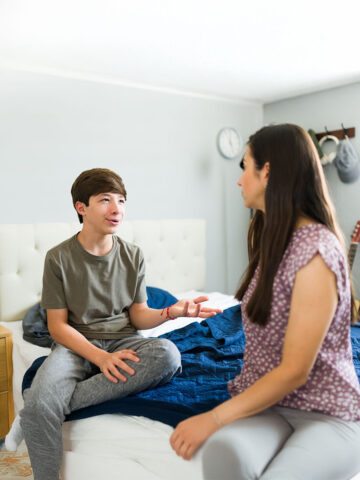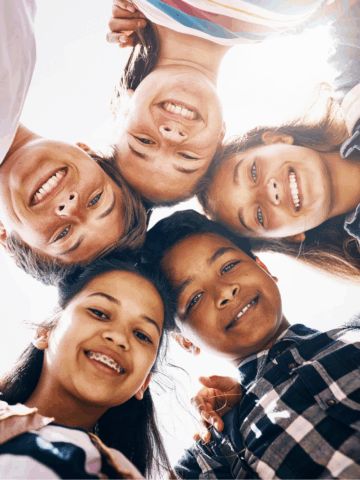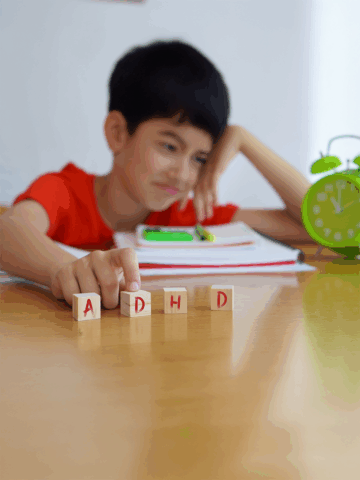It’s never too early to start to have conversations about race with your kids. In fact, experts at Yale University have found that by 6 months of age, infants can notice differences in skin color and hair textures; by 2 years old, children can point out differences in skin color; by age 3, children can form judgments about people based on racial differences; and by 5 years, a child can show many of the same racial attitudes that adults have.
Dr. Sheila Modir, a pediatric psychologist at CHOC, wants to help parents find the right approach for starting conversations about race with their children. Here, she discusses developmentally appropriate dialogue for all ages and addresses common questions.
How to start a conversation on race with your child
Children as young as age 5 years will begin to pick up cues from their parents on how to treat others of different races. Because of this, Dr. Modir urges parents to check in with themselves first before starting this important conversation with their children. Ask yourself: Are you in a place to begin talking about this topic with your child?
First, you may need to address any internal challenges you may have with race or racism – examine any concerns, questions or possible biases you may carry. Then, take a few moments to gather your thoughts and clarify the goal of the conversation – what do you hope your child will understand that they didn’t before? Finally, identify the resources and support you need to begin this conversation.
After you examine where you are at, use the following tips to help steer your conversation:
- Be preemptive with this conversation. Don’t wait until your child comes to you or they may think that talking about race is a taboo topic.
- Ask open-ended questions to elicit a more engaging dialogue and to allow the conversation to feel more welcoming for your child.
- Ask your child what they may already know about race. You may be surprised about what they have picked up on already.
- Engage in a series of conversations with your child versus a “one and done” conversation. You can constantly revisit this topic as your child grows older and learns new things related to race/racism.
- Avoid taking a color blind or color silence approach. Although this may be a well-intended stance, we need to acknowledge that racism is real rather than just saying, “We don’t see race in this house.”
- Be open to learning and modeling. You don’t need to have the right answer to every question. You can show your child that you are willing to learn together.
- Leave space for feelings. As a parent, the natural instinct may be to shield your child from feelings of anger and sadness, but we want to focus on validating these emotions in response to injustices and help the child find a healthy way to cope and contribute. Encourage your child to put their feelings into action by writing letters, drawing, going to movements and volunteering.
- Be mindful of the media you expose your child to. Because children learn about the world through the media that they view, make sure there is diversity in the images, movies and shows that they are seeing. Also, make sure that the media they’re viewing doesn’t depict people of color through a negative lens.
- Limit exposure to violent videos. Although we want our children to know the reality that racial violence exists, seeing violent videos directly or hearing graphic details about violence may be traumatizing.
- Close the conversation by instilling hope on what is possible and the changes that have been made toward equity and equality. Remind them that there are countless people who care a lot and are working toward making this world a better place.
Cater your dialogue about race for different ages
A renowned psychologist named Jean Piaget had a theory of cognitive development suggesting that a child’s acquisition and understanding of information and knowledge changes as they grow. With that in mind, Dr. Modir encourages parents to use developmentally appropriate dialogue when engaging in conversations on race with their children to meet the child where they are at cognitively in order for them to be able to understand such an important topic. Parents are the experts when it comes to their child, and they will know best what their child is ready for. You can customize this advice to suit where your child is developmentally — regardless of their age.
How to talk to young children about race
If you are planning to have a conversation about race with your child who is between the ages of two and seven, you have to remember that they are in the developmental stage of modeling and learning from you. They will watch and imitate your behaviors during this time — even when you are not in front of them. Because of this, it is important for parents to model respect to others and emotion regulation.
For example, if you are watching a show with your child and someone is mean to one of their favorite characters, you could say something like: “Seeing that character disrespected made me feel sad. In this house, we make sure to respect each other and always be nice to people even if they may be different from us.”
Because children identify with characters from TV shows and movies so well, you can expand on their imagination by using their favorite characters to help with your dialog about race. Picture books can also be a great way for a child to experience different races if your community lacks diversity. Below we have included a list of picture books focused on diversity, race and racism to help you begin this conversation.
At this age, children will also become aware of physical differences like skin color. Crayons with expanded skin tone colors can help children understand that there are more colors than just black, white and brown, and there are many other skin colors in between that may represent their friends and family.
When major events occur, like George Floyd’s death in 2020, children may hear about them at school. Because of this, it’s important to address these events with your children. Dr. Modir offers the following suggestions to explain these events to your 2- to 7-year-old:
- Give facts in simple, basic terms. Provide a brief explanation of the event or movement.
- Reassure safety. Discuss the values that you want to instill in your family. Explain that violence is never the answer.
- Use open-ended questions to allow your child to process their feelings.
- Listen, acknowledge and validate your child’s feelings. Say, “Yes, it’s scary or sad to hear that… .”
- Close the discussion with hope. Talk about how leaders are working for change, and it will hopefully be better in the future.
How to talk to preteens about race
When children reach the age of 8 to 12 years, they are considered concrete thinkers. They can easily grasp concepts like right vs. wrong and fair vs. unfair. To build on this, Dr. Modir suggests using analogies. Ask your child something like, “If I ask both you and your sibling to do a chore and I give your sibling two cookies as a reward while I give you one, is that fair?”
They will likely respond with, “No!” Then, you can explain how people of different races are often treated unfairly in society today and start a conversation of fairness and equality.
Another conversation strategy is to connect the past and present through U.S. history. As your child learns about civil rights movements at school, you can reference previous events and heroes and relate them to what is happening today.
When it comes to discussing police brutality, your conversations can be more advanced than with younger children. Add in more facts that they can relate to, like how black girls and boys are more likely to be suspended at school than white girls and boys. National data collected by the US Department of Education’s Office For Civil Rights showed that in the 2015-16 school year, Black male students represented 8 percent of enrolled students and accounted for 25 percent of students who received an out-of-school suspension.
Just like with younger children, close the conversation with hope. Explain that change is coming – policies and people are working to help what has been happening. Beyond that, encourage your kids that they can advocate and build on the change that is happening — they can make a difference.
Remember that children are quick learners, and they are a lot more resilient than we give them credit for. You can be honest and open with them.
How to talk to teens about race
When children enter their teenage years, they become more abstract thinkers. They can engage in discussions about moral dilemmas and ethical issues and may start to take a sociopolitical stance.
At this age, your child may want to take action and get involved themselves. Find shared ways to contribute to a movement, like joining a protest, volunteering or learning together.
Parents should serve as examples for them on how to respond appropriately to injustice. In this stage, you need to be authentic and genuine. Even if you don’t have the answer, you can say, “I don’t even know what to say about everything that’s happening, but I hope it gets better.”
Helpful resources about race/racism for kids
Use the following resources to help guide your conversation, promote diversity and provide helpful education on race and racism.
Children’s books that focus on diversity, race, and racism
“Eyes that Kiss in the Corners” by Joanna Ho
“I am Enough” by Grace Byers and Keturah A. Bobo
“Our Skin: A First Conversation About Race” by Megan Madison and Jessica Ralli
“Same, Same But Different” by Jenny Sue Kostecki-Shaw
“The Proudest Blue” by Ibtihaj Muhammad and S. K. Ali
“We are Water Protectors” by Carole Lindstrom and Michaela Goade
“Your Name is a Song” by Jamilah Thompkins-Bigelow
Helpful webpages
Watch Dr. Modir’s full webinar on this topic as part of CHOC’s Mental Health Education Program (MHEP), which offers free webinars to parents on a variety of subjects. To view upcoming webinars, view the MHEP events calendar.
Get more expert health advice delivered to your inbox monthly by subscribing to the KidsHealth newsletter here.
Get mental health resources from CHOC pediatric experts
The mental health team at CHOC curated the following resources on mental health topics common to kids and teens, such as depression, anxiety, suicide prevention and more.





